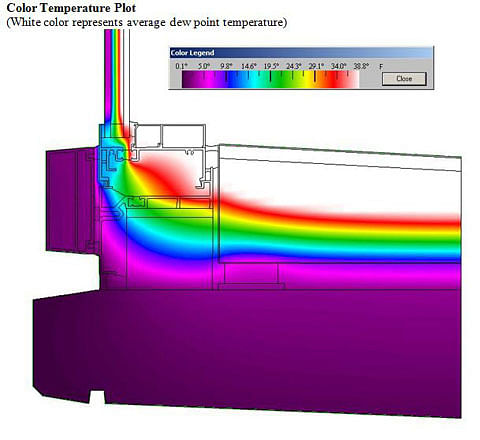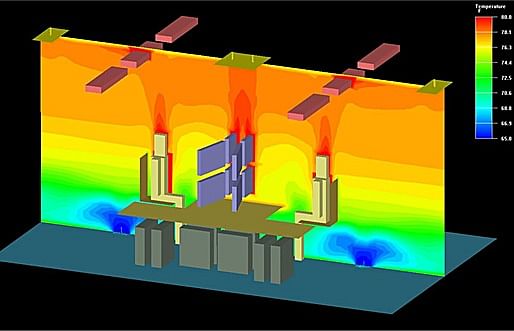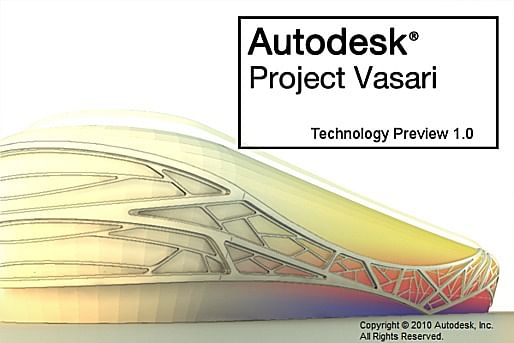
Note: This post was supposed to be rolled out on Halloween... in tribute to it being a very scary subject that causes controversy all across the architecture, construction and building performance industries. Despite this controversy I wanted to provide a general overview of the topic and a guide to some of the software tools out there today.
The Trend
'Sustainable' design is one of the few areas in the industry that has continued to grow even during the recent recession. This 'green' boom is encouraging, but it is important to take a step back and assess this development beore charging ahead. The recent 'green' boom has sparked two trends regarding performance simulation: As building codes become more rigorous and clients demand 'certified' green projects, compliance modeling is becoming more commonplace. Secondly, as clients become more self-educated about sustainability, they want to see more documentation of sustainable design strategies and impact and they want to see it earlier on. Furthermore, the benefits of implementing integrated design from the start of a project have been documented and more and more firms want to be able to assess sustainable strategies at the early conceptual stage.
The Impact
While the drive the reduce the dependency of buildings on non-renewable energy sources can only be seen as positive, there are drawbacks caused by minimal regulation and the availability of assessment tools.
Energy simulation is based on relatively basic building physics. There are several different platforms and simulation engines out there, but the principles are all the same. When you start to compound the variables that impact the energy use in a building however, it becomes very complex. There are several tools available these days which can fairly easily produce results in the form of energy use predictions. However, software is only as smart as the person running it and it has become far too easy to produce inacurate results which can be passed off as legitimate. Furthermore, most energy modeling going on in architectural offices and schools is done for verification purposes as opposed to early stage assessment.
Simulation Software Breakdown
Compliance Modeling: IES, EnergyPlus, EDSL TAS, DOE-2, Equest, Therm

These tools are traditoinally used by engineers but are becoming more available to the general architecture community. They are designed for compliance modeling at the end of the design process, when there is a lot of detailed information about the project. The scary part about these programs is that while they require a lot of detailed data in-put for a meaningful result, it is possible to get data out-put with minimal input. While a result is given, it is very possible to be completely inacurate for the specific project you are trying to assess because of inaccurate in-puts. Furthermore, the in-puts can be very complex and it requires a discerning eye with a building physics expertise to assess the validity of the results. Even, then, results will never be 100% accurate because of the variables that are uncontrollable such as occupant use. Therm is used to model 2 dimensional heat transfer and is a useful tool for assessing building envelopes.
Computational Fluid Dynamics: Ansys, Ecotect Wind Tunnel, Ambiens, Envi-met

CFD modeling is the epitome of a complex topic that has been oversimplified and generally produces totally inacurate results. Don't get me wrong, programs like Envi-met which studies wind-patterns at the site scale, and ambiens which analysis steady state flow for a single room can provide very useful feedback to engineers and designers. But CFD results are widely presented and blanket statements: "I did this simulation and the wind will go like this:" Air-flow is impacted by so many variables that it is extremely difficult for a non-expert to provide a realistic prediction. However, trends can be predicted for simple scenarios and these are useful for designers. At the end of the day it is a lot about how the results are interpreted and presented.
Visualization Modeling: Radiance/Daysim, Ecotect, Diva for Rhino

Radiance is a great program used for daylight compliance in LEED documentation as well as assessment of design strategies (it can also used as a rendering program). The program itself has a few bugs, but generally it is a very useful tool. It requires a little knowledge and understanding of the desired output, but generally can be widely understood on at least the basic level because of the graphic output. It generally plugs into Ecotect but can also plug-into Rhino through Grasshopper and Diva. Ecotect is probably the most well-known simulation software but is generally only trusted for its overshadowing and solar radiation anlaysis. The modeling tool is cumbersome and the program gets over-loaded and very slow quite easily. Ecotect is slowly being phased out but is still a reliable tool for specific tasks.
Conceptual Assessment Modeling: Vasari+Grren Building Studio, Sefaira

This is a fairly new area of development and quite frankly probably the most interesting for the 'common' architect. While both of these tools are still under development and are still being vetted, they show great potential for assessing the impact of specific design solutions on both cost and overall energy-use. They also help designers identify early on which strategies will have the most impact from early on so they can be integrated fully into the design. The key to these softwares is that they are not attempting to predict actual energy use, but rather provide numeric results that can be compared to each-other to assess impact. For example, Sefaira might say your building as you proscribed it in their platform will use X amount of energy. You can then easily change the R-Value of the wall systems and add a shading coefficient to the glazing and it will tell you your building is now using y amount of energy. It is not saying you can now go to your client and tell them this is how much energy your building WILL use, but rather, here is a ballpark figure and as we see the value of paying for the extra insulation really pays off in energy savings. Again, it really is ALL about how the information is interpreted and presented; which is why these programs can be very frightening to those in the building performance industry.
All in all there are some amazing benefits to architects incorporating simulation aoftware into their design process but it is essential to understand that a software can never replace expertise. An understanding of realistic in-puts and an ability to assess the validity of out-puts is necessary for a meaningful integration into architectural design.
A discussion on everything to do with sustainable design. From renewable energy to implementing integrated design in professional practice. Case studies, article reviews and green building certification methods and additional resources will all be included.
3 Comments
If Archinect had a 'like' function, I would 'like' this. Incredibly informative!
Isn't Vasari a pay-for-a-service type of program rather than a program-you-own-a-license-for program? This makes me uncomfortable, although this is more of a license issue than an output issue.
Also, is this mostly used for compliance, or have there been experiments in using these for, say, generative design that you have seen/done?
Archinect DOES have a like function:
Hi MixmasterFestus,
thanks for the comment!
Vasari is in pre-release mode so its free to download for now but will go on sale in the new year. It becomes powerful when you connect it with Green Building Studio which is a subscription service and is usually included if you have a full Revit license. Vasari can still do solar analysis but for any preliminary energy use assessment you would have to log-in to your Green Buiding Studio account. These days, more and more programs are running as 'cloud' based programs to make the process faster so you dont necesarily download a program but rather get access to and interface. The same is true for Sefeira.
Vasari and Sefaira are not tools for compliance modeling, but rather for quick assessment of the impact of different parameters on the overall design. For example, do I save more energy if I invest in Low-e triple glazing or higher insulation levels. Or, which shading device provides the coverage I want. Generally, small scale specific questions.
From my experience, the Diva plug-in for Rhino/GH would be best for the assessment of generative design options, but I have not played around with it yet and can't vouch for its accuracy. (It is run off of the Energyplus/DOE-2 engine though so it is probably pretty good).
Hope that answers your questions at least partly.
Block this user
Are you sure you want to block this user and hide all related comments throughout the site?
Archinect
This is your first comment on Archinect. Your comment will be visible once approved.